Such a shrub like Barbaris is quite common in nature. It is found in forest glades, biscuits and edges, as well as not far from ravines. Today, this plant can often be seen on urban avenues, in parks and on household summer cottages. This is due not only with its unique decorative characteristics, but also with therapeutic properties that have been widely used among private dacities.
Barbaris decorative and its features
- Barbaris refers to the Barber Playing Family and is a view of a tree-shaped shrub. The foliage of this plant is large, simple, and in some kinds leathery.
- The spikes that are on Barbaris branches are transformed leaves. During the flowering of the shrub of Barbaris decorative, it radiates fragrant aroma, and the fruit, depending on the type of plant, can have a different shape and size.
- Most of the plants of this family closer to the autumn acquire a bright reddish tint.
- The medical properties of Barbaris for the first time became known in Ancient Egypt. In the treatment of many diseases, fruits, leaves, roots and even the bark of these shrubs were used. With their help, they treated a wide variety of diseases, for example, a zing, hot, etc.
- Similar therapy with Barbaris began to be possible due to the specific chemical composition of the plant, which can be called unique and one of the richests. Modern pharmacists are used from barberry extracts for the treatment of a variety of chronic and acute diseases.
- In addition to applying in medicine, Barbaris became popular and acquired popularity in cooking. Its pleasant aroma awakens appetite, gives dishes piquancy and uniqueness. The fruits of the plant are used as seasonings to dishes that make up sauces, as well as for pastry baking.
- Together with all the positive qualities of Barbaris, there are some contraindications for its use. Similar precautions concern women who are waiting for a child and young children.
Landing Barbaris decorative: selection of place and time
- Deciding to decorate your country area with such a useful and decorative shrub, you must choose for this suitable time and place where Barbaris will feel most comfortable.
- The place should be well illuminated. This is due to the fact that this plant belongs to a fairly frekest. Being in the shade, he will also develop and grow, but it will eventually become dull and unattractive, and the crop will be scarce.
- If the shrub of Barbaris is decorative is grown by you in the purely therapeutic purposes, then for its landing, you should choose a place in the site located in a half-tree. Thus, the root plant of the plant will develop most actively, and the external beauty will be lost.
- Time to planting Barbaris can perform spring or autumn. Gardeners are more prone to the fact that the disembarkation must be made in the fall. This is due to the fact that the seedlings in the spring are very early to bloom. If you are planning to make landing seedlings in spring, then you need to do it before swelling the kidneys on the plant.
Decorative Barbaris breeding methods
There are several ways to reproduce this plant.
Reproduction by chains
When using such a method, you need certain knowledge and compliance with the relevant technology. Its essence lies in the following events.
- In the spring it is necessary to choose the annual branch of the shrub, tilt it to the soil and fasten in the prepared groove.
- The depth of the groove must be no more than 15 cm.
- After that, the main part of the branch is powered by a soil, and only the upper part is left on the surface.
- Before the fall, the Escape is rooted and only after that it is separated from the main bush and sit down.
Reproduction with seeds
This method is more common, and can be used for most species of this plant, especially for a barberry decorative low-speed. The exception is only the bunctory varieties of shrub.
- To extract seed, it is important to choose the most attractive and juicy fruits of the shrub.
- Bones must be removed from the selected fruits, rinse in the solution of manganese and dry.
- Barberry sowing from stones is made predominantly in the spring. For this, the seeds are placed in the ground for several centimeters deep into the ground and put out the ground.
- Before this place of disembarkation must be mixed with sand. From above to the soil, it is necessary to pour a non-footing layer of sawdust. After that, the place of disembarkation is covered with polyethylene film.
- Daily bed must be used.
Reproduction by the method of stratification
This method is that already fixed plants of barberry decorative plants are planted in open soil.
- For their cultivation, it is necessary to place seeds in the sand tank and send to a cool place for 4 months.
- After this time, the first shoots will appear.
- It is necessary to wait for two leaves on them. After that, the plants are piquied into individual pots, and the Landing of Decorative Barbaris itself is produced in an open primer a year later.
Reproduction with cuttings
- Strenters suitable for rooting should be long at least 15 cm and have at least 4 interstices.
- The lower leaves are removed from them, and the cuttings themselves are planted into the prepared soil.
- After that, the seedlings are placed in a greenhouse, or mini-greenhouses are created.
- Rooting in this case, with proper care and irrigation, occurs very quickly.
We prepare the soil and plant a plant for a permanent place
- The preparation of the soil under the disembarkation of Barbaris does not imply special difficulties. To do this, it is quite thorough to step up the earth, get rid of all weeds, roots of other plants and easily fit the ground.
- As a fertilizer, organic fertilizers, lime, potash salt and other minerals can be used. It all depends on what type you have a soil.
- When planning shrub seedlings in spring, it is necessary to ensure that the root system of the plant does not in contact directly with the fertilizer. This can lead to a burn, and the plant will hurt or completely burst.
- In order to plant a ready-made fastened sapling barbaris, it is necessary to dig a hole in a depth of 10 - 15 cm, put a seedling there and to dissolve the roots.
- After that, it is important to abundantly pour the plant and gently sprinkle the well soil, slightly sealing with your hands.
- After such a landing, the fruits will appear on the shrub after only 2 - 3 years.
Landing the decorative barbaris seeds directly into open ground is a more troublesome and time-consuming procedure. In addition, the preparation of fruits from such plants can be expected no earlier than after 5 full years.
Decorative Barberry Care
- Barbaris decorative care does not require special. Immediately the concern for the plant itself includes its timely watering, feeding, protection against pests and other events for its growth and development.
- Barbaris decorative is a plant that does not tolerate the moistened soil. Alive and systematic irrigation require only young seedlings to the time until they fix it. After that, watering the shrub can be reduced to 1 time per week. In addition, systematic weeding between shrubs, as well as the rupture of the Earth around them is strongly recommended.
- Fingering the plant of barberry decorative is better to start a year after its landing in an open ground. This can be done with the help of comprehensive universal type fertilizers. In the case of the poverty, the soil can be superior to special means that can be purchased in the corresponding stores.
- Most of all needs a systematic feeding of a live fence from Barbaris. It must be fertilized at least 2 times a year.
Diseases and pests of Barbaris decorative
- Among the most common diseases of the barbaris decorative can be distinguished by mildew, dar and floral spin. In order to prevent or prevent plant disease as possible, it is necessary to systematically inspect it and conduct preventive measures to strengthen the immunity of shrub.
- The wave can provoke wroving and drying of the leaves.
- Pyadenitsa brings damage directly to the fruits of shrub, and the torment dew shows itself in the appearance of a white plating on the plant.
- All diseases are recommended to be treated with special tools that you can purchase in the appropriate gardens and garden stores. It is necessary to do this immediately after the disease was observed, otherwise it can lead to the spread of the disease to neighboring bushes and even to the death of the entire family of shrubs.
Barbaris decorative as landscape decoration
- The plant barberry decorative is a reduced copy of the Barbaris of ordinary. This is a long-term shrub, which in height usually reaches no more than 60 cm.
- The selection path was created by many species and varieties of this type of shrub, having various shapes, colors and other differences. However, one should not forget that decorative barberries is just a subspecies of the usual variety of this plant, so it will still be fruitful. This fact will only give the uniqueness for the landscape design of your site.
- Barberry can be planted as a separately growing plant, as well as used to create whole group compositions.
Preparation options
Consider several ways to use Barbaris in the country area.
Decoration of Live Hugs from Shrub
- Due to the fact that the plant is equipped with prickly spikes, it can be used as a living fence.
- For several years, the plants grow up and form a dense green carpet, which can act as an excellent decorative element of the site.
- To do this, it is only necessary to periodically cut the stretched branches of the plant.
Mature formation
- Barberry decorative low-speed can be used for the design of borders and tracks.
- Visually, he makes them wider and gives a clear form.
- For these purposes, it is better to use plants that have a spheroid form.
- It is essential that this kind of design of the site is not recommended to use near various kinds of playgrounds. Barbaris's decorative bush has sharp spikes that may affect the child.
Design rosary
- Barbaris shrubs are often used as vegetation for alpine slides and rosary.
- Compositions using this shrub unpretentious, well combined with other plants and have a very attractive appearance.
- The varieties of decorative barberries must be selected based on the size of the roller.
Bright area decoration
- At large sites and in the parks, a single plant from the barberry family will be perfectly. The height of such a decorative shrub can reach up to 3 m.
- The red shade of the leaves of this shrub will look good on the green lawn and will become a real decoration of the whole garden.
Circumcision and wintering shrub
- In order for the decorative plant to look attractive, it is necessary to periodically carry out its sanitary cleaning. Such prophylaxis is to circumcise damaged, dry or too long branches.
- In addition, the trimming of the shrub can be carried out in order to form a decorative form of the plant.
- The length and number of branches depends on the purpose of which this unusual shrub is used on the plot.
- Living fence from this plant should have short thick branches, and a single bush is formed with long, powerful and magnificent branches.
- The trimming of the decorative bush of Barbaris is most often produced in early spring, when the plant has not yet gripped.
- In addition, it is possible to form a plant with the help of pruning, this method of care also serves for the natural rejuvenation of the shrub. Old branches must be cut off at the very base, near the earth.
- Depending on the grade of decorative barbaris, it is recommended to pay attention to the resistance to low temperatures. If the plant does not tolerate frost, it is necessary to warm it accordingly. Does it with peat, fabric or dry leaves.
Decorative plantings of Barbaris are able to decorate with its presence any territory or plot. Compared to other plants for decorating the site, it can be said that Barbaris is rather unpretentious and universal in care and use in everyday life. In addition, even the decorative types of this shrub can be used for therapeutic purposes or for cooking. Therefore, it is widely popular and distributed on private cottage areas.

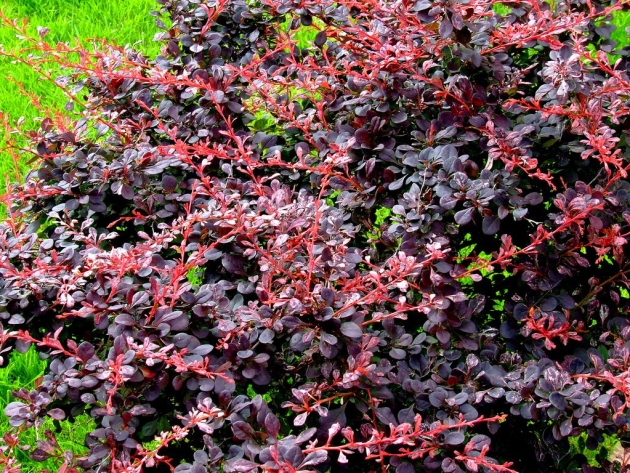

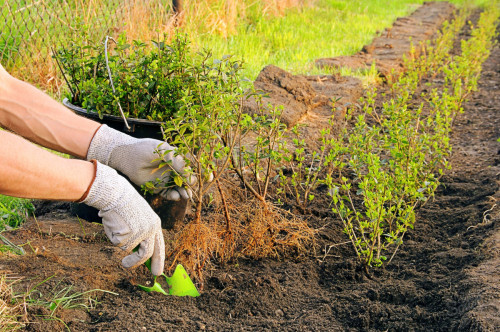
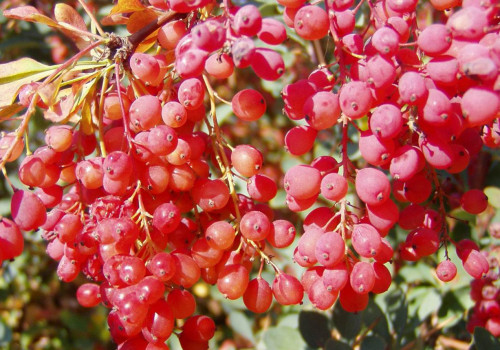
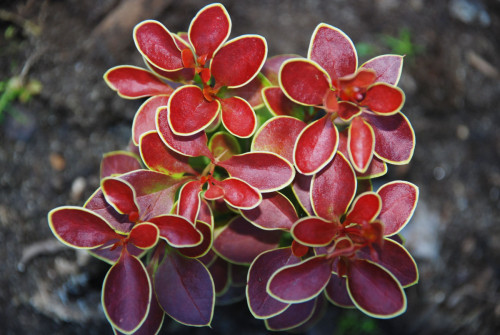
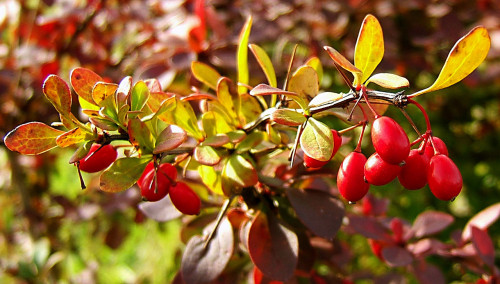
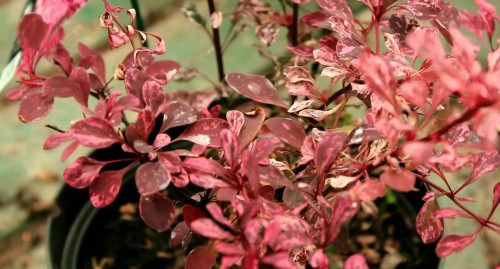
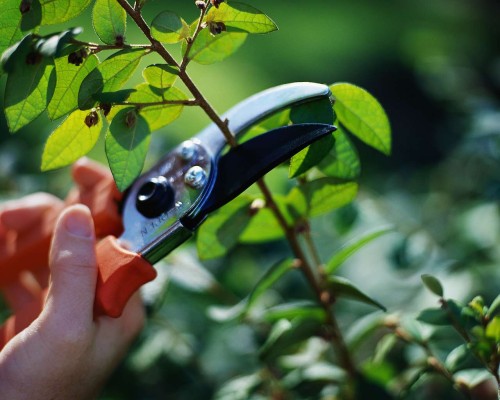












 Start a discussion ...
Start a discussion ...